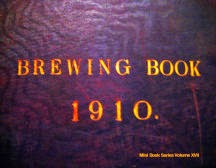One thing is immediately obvious: all these beers were brewed specifically for the UK market. How do I know that? Because they're all way too weak to have been sold in Holland, where Pils is always a standard 5% ABV. They have the typical OG of British Lagers of the period: somewhere in the low 1030ºs.
The names are pretty much as you would expect. Heineken, Amstel, Oranjeboom, ZHB. You might not have heard of the last one. It stands for Zuidhollandse Bierbrouwerij, which was a decent-sized brewery in The Hague. It closed in the early 1970s. Loosje, on the Nieuwe Markt in Amsterdam has a wonderful depiction of the brewery in tiles.
Bierbrouwerij De Wereld I'd never heard of. It was located in the village of Raamsdonk in Noord Brabant. The beers in the table can't have been brewed there because the brewery was bought and closed by Oranjeboom in 1948.
The one simply called Breda, must be Drie Hoefijzers. Which in 1968 formed Verenigde Nederlandse Brouwerijen Breda-Rotterdam with Oranjeboom. And which was later taken over by the UK's Allied Breweries.
| Dutch-brewed Lager in the UK 1950 - 1963 | ||||||||
| Year | Brewer | Beer | Price per pint d | OG | FG | ABV | App. Atten-uation | colour |
| 1950 | Amstel | Lager | 1033.6 | 1008.1 | 3.31 | 75.89% | 15.5 | |
| 1957 | Amstel | Lager | 42 | 1030.8 | 1007.2 | 3.06 | 76.62% | 9.5 |
| 1961 | Amstel | Amstel Lager | 36 | 1030.9 | 1006.1 | 3.10 | 80.26% | 9.5 |
| 1957 | Amstel | Amstel Lager | 1031.9 | 1006.9 | 3.24 | 78.37% | 12 | |
| 1957 | Bierbrouwerij De Wereld | Piraat Lager Beer | 30 | 1032.8 | 1005.7 | 3.52 | 82.62% | 9 |
| 1959 | Bierbrouwerij De Wereld | Piraat King Size Ale | 27.5 | 1031.1 | 1005.6 | 3.31 | 81.99% | 10 |
| 1950 | Breda | Lager (light) | 1036.9 | 1007.8 | 3.78 | 78.86% | 13.5 | |
| 1961 | Heineken | Lager Beer | 36 | 1030.6 | 1006.3 | 3.04 | 79.41% | 4.5 |
| 1963 | Heineken | Lager | 40 | 1030 | 1008.4 | 2.70 | 72.00% | 6 |
| 1957 | Heineken | Lager | 42 | 1038.7 | 1009 | 3.86 | 76.74% | 5 |
| 1961 | Oranjeboom | Dutch Pilsner | 36 | 1031.1 | 1006.9 | 3.02 | 77.81% | 9.5 |
| 1963 | Oranjeboom | Pilsner Lager | 42 | 1031.6 | 1005.9 | 3.21 | 81.33% | 7.5 |
| 1957 | Oranjeboom | Dutch Lager | 1035.4 | 1007.5 | 3.62 | 78.81% | 10 | |
| 1957 | Oranjeboom | Dutch Pilsener | 42 | 1033.3 | 1007.8 | 3.31 | 76.58% | 9 |
| 1947 | Z.H.B. | Z.H.B. Lager | 30 | 1032.4 | 1008.2 | 3.14 | 74.07% | 11.5 |
| 1950 | Z.H.B. | Lager | 1033.7 | 1008.4 | 3.28 | 75.07% | 12 | |
| 1957 | Z.H.B. | Export Pilsner Lager | 1032.3 | 1005.8 | 3.44 | 82.04% | 13 | |
| 1957 | Z.H.B. | Export Pilsner Lager | 42 | 1031.6 | 1006.2 | 3.30 | 80.38% | 10 |
| 1961 | Z.H.B. | Export Pilsner Lager | 37 | 1032 | 1005.9 | 3.26 | 81.56% | 8 |
| Average | 37.1 | 1032.7 | 1007.0 | 3.3 | 78.44% | 9.6 | ||
| Source: | ||||||||
| Whitbread Gravity book held at the London Metropolitan Archives, document number LMA/4453/D/02/002. | ||||||||




















 I've a shitload
I've a shitload


























































































